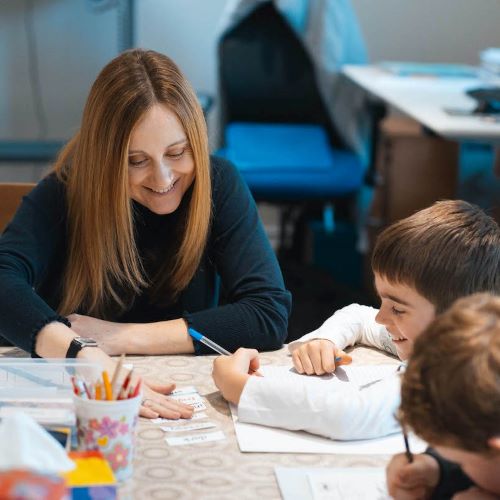As an author, I often visit schools
Recently, I went to a school and, while signing in at reception, a boy behind me whispered to his mum, “That’s Nikki Young!”.
He recognised me because they had been reading my book, Time School: We Will Remember Them before I came in to do some creative writing workshops.
I’m not a famous author, but if children read my books, like them and get excited by my going to visit them, then I don’t need to be famous, do I? I have done exactly what I set out to do: INSPIRE.
And that is the power an author holds in their hands: the power to encourage and inspire children to want to read, write and learn.
Many children struggle to write a story and the thought of writing a whole novel seems like an impossible task to them. But when I talk to them about my process of planning, and of how I create characters or tackle difficulties in the plot, they begin to see how if you break it down, the process doesn’t seem that daunting at all.
When children meet an author in person, they also see that we are normal people, not some super-human superheroes with powerful writing capabilities that border on extra-terrestrial. It may be great for books sales and publisher profits, but the fact many children’s authors are celebrities sends the message to children that you can’t have one without the other. And that’s not a message we want to send.
Celebrities can get children interested in picking up a book and reading, but ordinary, run-of-the-mill authors that work tirelessly in the background can help children see that writing is a worthwhile and enjoyable process.
I know what it’s like to have reluctant readers.
Having three children of my own, I was aware of the struggles children face to balance the grammar and technicalities of writing with the creative process. For many authors, myself included, the flow of the story comes first and we’re able to see past the mechanics to bring our stories to life. That’s why, when I became a published author, I began to work with children as a creative writing tutor, helping them learn how to do this too.
Since 2017, I’ve worked with many children. Among the difficulties I’ve seen them face is a struggle with the complexity of their ideas. Some read at a level that is beyond their writing capabilities. Others are influenced by games, which I believe are too old for them. This means, when it comes to story ideas, these children come up with complex plots and sub-plots. They also have a host of characters and no idea what to do with them. I have to encourage them to simplify their ideas so that they can write them down.
Children can also struggle with moving between the beginning, middle and end of a story. Depicted as a story mountain, it’s a great visual. The difficulty comes, however, with the children knowing how to climb that mountain. Then, once at the top, being able to get back down again.
I help to simplify this process by giving children the tools to make that climb and descent.
It makes me sad to think some children put so much pressure on themselves to be perfect and many children feel they will never be good enough. But my aim, as both an author and a writing tutor, is to inspire them and put the fun back into writing. I want them to enjoy the process, just like I do, and find the magic that comes from creating something that’s all yours.
I can’t stress enough to the children how important it is to get the story out of their heads and onto paper without worrying about anything else. This is what editing is for. If the grammar’s not great, we can correct that. No one expects their first draft to be perfect, and that includes me. It takes many drafts before a story is considered ready for publication.
This is why I believe an author working with children is so important for developing creative writing techniques. What do you think?
I run weekly creative writing groups during term time, for children aged 7+, including a Young Writers Group for teens. I also work with children on a 1:1 basis. All via Zoom.
Find out more about my books.


0 Comments